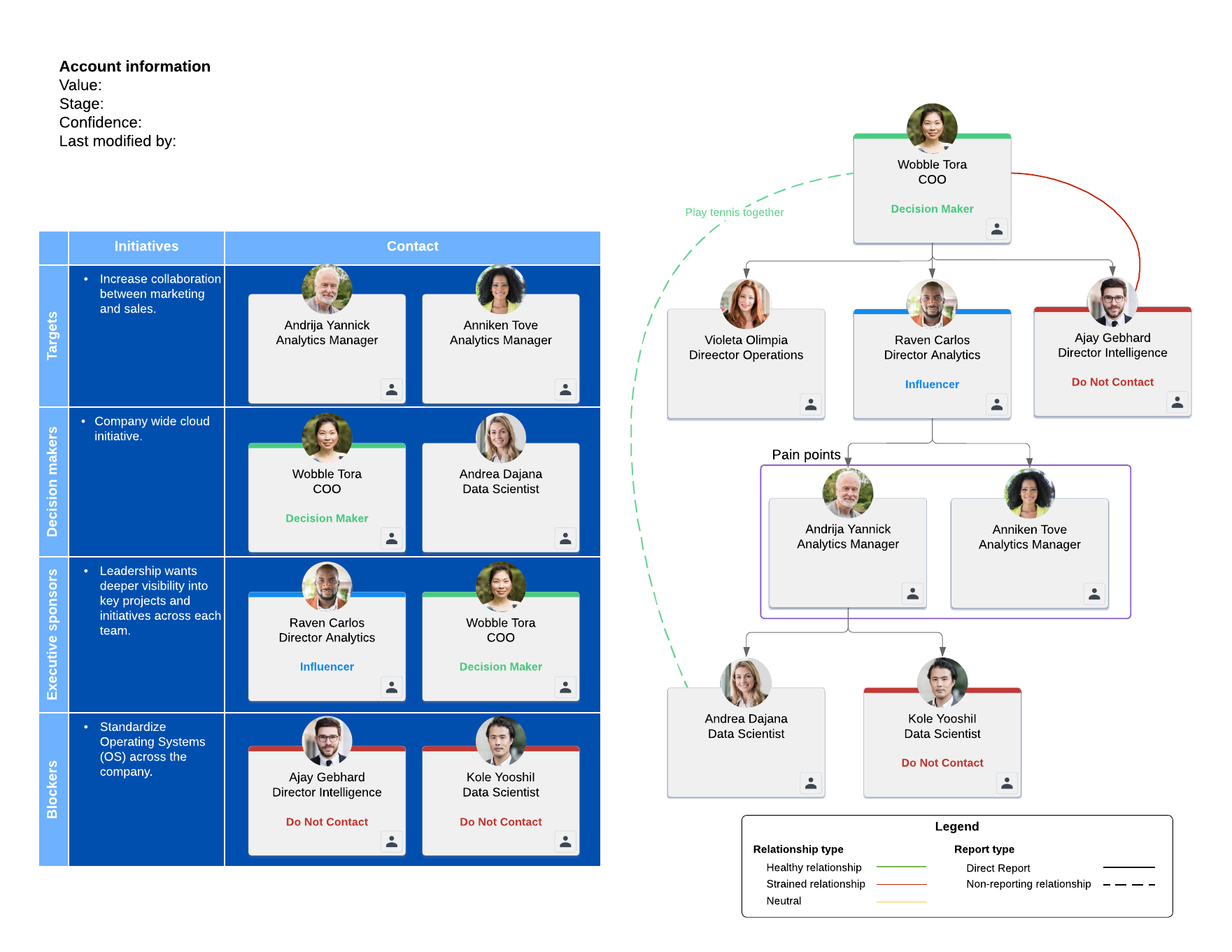Solid customer relationships are all about delivering great experiences at every touchpoint of the buyer journey. From completing your first discovery call to signing a renewal, there are plenty of moments to win over your customer—or to lose their trust and business.
A key moment in the customer lifecycle is the handoff between a sales rep to a customer success manager (CSM) or the transition between two CSMs. A successful and seamless transition between sales to CS lays the foundation for product adoption and success. At the same time, handoffs within the CS team have a significant impact on customer sentiment and retention.
Let's take a look at how to manage this balancing act and nail the customer handoff.
How to succeed in the sales to customer success handoff
Customer success efforts begin long before the client is assigned to an account manager or CSM. Consider this scenario: Over a few months, your customer shares a series of engaging, productive conversations with a sales rep. The customer feels like your company truly understands their immediate needs and their business goals. Eventually, your rep builds enough trust and shows enough value to close the deal—and then he disappears from the relationship. None of that context makes its way to the CSM who takes over the account, and the new customer feels like they're starting the conversation from scratch. Onboarding is rocky, and your customer is left feeling misunderstood and frustrated, which is certainly not a good jumping-off point for establishing a great customer relationship.
This situation is common but entirely avoidable.
Here are a few simple steps to nail the transition between sales and CS.
Document customer details and interactions in your CRM
From the very first discovery call, sales reps gather important information about customer challenges, pain points, needs, and goals. All of this information offers context and insight into what will make the customer successful and should be tracked into your CRM or another system of record.
Build required fields into your CRM. That way, when it's time for the handoff between sales and CS, you'll ensure that CS has all the info they need upfront. Sales reps and CSMs can refer back to this documentation to reset expectations, realign on priorities, and determine how to measure success.
However, many CRMs offer limited forms and don't leave room for true insider know-how on the customer, such as the general demeanor or buy-in of individual stakeholders. Sales reps should maintain their notes on a client, whether in a spreadsheet or existing strategy documents or calendars. This information can be shared in addition to CRM data to give the CSM a full-picture view of the customer.
Use account maps
In addition to client roadmaps and customer feedback, account maps are a great way to keep track of all of the stakeholders and necessary points of contact on a customer account.
This bird’s-eye view of all the key players not only improves internal communication but also ensures a client isn't frustrated when a new CSM seemingly lacks institutional know-how about the way the company operates. Account maps will also clarify who champions the product and who has buying power when it comes time to renew or upsell.

Account maps can bridge the gap between sales and customer success teams.
Learn howManage expectations early
As their name implies, customer success managers are responsible for and measured by the success of every customer. It’s also important for the sales rep to set them up to do that job well.
Before handing a new customer off to CS, sales reps should get proper buy-in on next steps and set clear expectations for the onboarding process and the work the client needs to do.
Sales and CS can work together to audit the onboarding process and find ways to make onboarding easier for the customer: Consider staggering key milestones to break up the work on the client side or look for ways the CSM can take on the burden of the implementation. Create a mutual action plan for implementation to lay out deliverables and timelines to hold everyone accountable.
Encourage sales and customer success collaboration
Countless articles exist on the challenges of sales and marketing alignment—or lack thereof. In some cases, the value sales reps are communicating to potential customers is not aligned with CS operations, which can lead to misaligned expectations during the onboarding process.
Head off any misalignment by building trust between the sales and success teams and finding ways to facilitate better collaboration and information sharing. Sales can collaborate with CS to find the value drivers and experiences that make the most impact for existing clients to ensure sellers are selling to the right kinds of customers. In turn, CS can offer sales support to help deals move across the finish line quickly and ensure a seamless customer experience.
How to best transition from one CSM to another
Customer success managers aren't just on-call resources. Customers expect them to be intimately familiar with their business and become true extensions of their team.
This level of engagement means CSMs end up carrying a lot of tribal knowledge on each of their customer accounts—knowledge that can be lost when an account needs to transition to a new CSM. Too many handoffs or transitions can also signal dysfunction in your organization, which can erode the trust of your customers.
Whenever a CSM transitions off the account, you want to make sure that you maintain the customer relationship they’ve built. Transitions are also a great opportunity to reset expectations and start fresh if the relationship was a bit rocky.
Here are some steps to nail the handoff process between one CSM to another.
Keep your customer in the loop
Consistency is key to customer success. Whenever possible, avoid turnover on customer accounts to communicate stability and keep tribal knowledge intact. However, there are many reasons you may need to adjust the organizational structure of a customer account, from shifts in company strategy to employee churn or promotions.
A good rule of thumb in these circumstances: Don't catch your customer off guard. It's important to give the customer as much notice as you can before an account transition so they feel included in the process and comfortable with the timeline of any changes.
It's also a good idea to include the new CSMs on phone calls and communications with the customer during the transition. This will provide both the current and new CSM time to pass off knowledge, build trust with the customers, and ensure a seamless transition.
Set clear expectations
Internally, establish clear expectations and roles and responsibilities for customer handoffs. Establish non-negotiable requirements for the handoff, so the customer does not need to repeat themselves. Document key information in your CRM, and agree on which meetings need to occur to transition the relationship at the right time. Document everything and keep your teams accountable to the process.
Once the handoff is complete, expectations for customer engagement should be clear if sales and CS are aligned. However, it’s still important to clearly communicate any upcoming dates and milestones in the onboarding process, and throughout the customer lifecycle.
Pass off all customer knowledge
Again, account maps are a good way to keep track of the champions, buying team, and key players on any customer account. These maps help any new CSM understand where to go when it’s time for renewals, and where to focus their attention.
During the lifecycle of the account, CSMs should also keep detailed notes to help with any inevitable future handoffs. Everything from client background details to technical history to the communication styles and preferences of the main points of contact should be documented and passed along.

Create and follow consistent CS processes
A transition from one CSM to another can be jarring enough for a customer. CSMs potentially amplify that initial pain if they follow wildly different CS processes. Establish clear, agreed-upon ways of working with customers and document them in a central location using flowcharts and other visualization tools. You can still leave room for CSMs to leverage their skill sets and strengths, but alignment on basic processes will ease your customer's mind during any necessary account transition.
There is certainly an art to the ideal, seamless customer handoff. By improving sales and CS alignment and establishing clear processes and documentation needs, you can set sales teams, CS teams, and your customers up for success.

Improve internal sales communication to boost your bottom line. See our tips for removing the hidden barriers to closing deals.
Learn moreAbout Lucidchart
Lucidchart, a cloud-based intelligent diagramming application, is a core component of Lucid Software's Visual Collaboration Suite. This intuitive, cloud-based solution empowers teams to collaborate in real-time to build flowcharts, mockups, UML diagrams, customer journey maps, and more. Lucidchart propels teams forward to build the future faster. Lucid is proud to serve top businesses around the world, including customers such as Google, GE, and NBC Universal, and 99% of the Fortune 500. Lucid partners with industry leaders, including Google, Atlassian, and Microsoft. Since its founding, Lucid has received numerous awards for its products, business, and workplace culture. For more information, visit lucidchart.com.
Related articles
Lucidchart as a Sales Tool: How You Can Sell Efficiency in a Single Diagram
One diagram can help a potential customer visualize the way your product will fit into their company. Read how sales reps use Lucidchart to show value.
Account mapping: A win-win for sales leaders and sales reps
Learn why account mapping is a win for everyone—leadership knows reps are executing, and reps are confident because they are. Our VP of Inside Sales, Peter Chun, shares the benefits of account mapping and the impact this practice has had on our sales org.
Why account management is key to business success
Account managers are essential to maintaining strong client relationships and a healthy bottom line. Learn the roles and responsibilities of account managers and the ways they contribute to the success of their clients and business.

